Customer experience in insurance has a trust problem. Policyholders still face long hold times, robotic agent scripts, and inconsistent service across channels.
The more significant problem for operations managers is found beneath the surface: disjointed tools, a dearth of useful data, and a lack of insight into the true nature of customer conversations.
According to McKinsey, top insurers who improve CX can see up to a 20% boost in customer satisfaction and a 15% increase in revenue.
But most teams don’t have the systems to scale that impact. Agents work in silos. Coaching is manual and reactive. Critical insights get buried in hours of calls and chats.
That’s where Convin fits in. Our conversation intelligence platform analyzes 100% of customer interactions - calls, meetings, and chats that turn them into real-time guidance, compliance alerts, and agent coaching recommendations.
One global insurer used Convin to reduce claims handling time by 27% within the first 60 days. Another achieved 95% QA coverage, without expanding QA headcount.
Convin doesn’t just record conversations. It highlights the important things, such as changes in customer sentiment, missed upsell opportunities, and process bottlenecks, and directs that information to those who can take appropriate action.
If you're responsible for improving CSAT, reducing churn, or scaling CX with quality and compliance intact, it's time to move past legacy tools and get results faster.
Unlock insights from every conversation with Convin.
Why Personalization Powered by AI Is the New Standard in Insurance
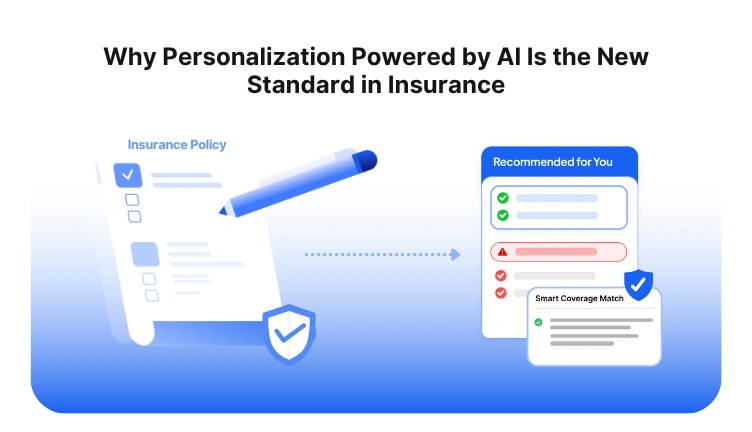
Insurance has always been built around risk. However, the true risk that carriers now face is irrelevance rather than just underwriting or fraud.
Customers are no longer comparing you to other insurers. They’re comparing you to the experience they get from Amazon, Netflix, or their favorite banking app.
This shift has made personalized insurance service a non-negotiable. One-size-fits-all policies, delayed support, and generic outreach no longer cut it. Consumers expect insurers to know who they are, anticipate what they need, and engage accordingly.
Here's where AI engagement tools make a big difference.
From Generic to Personal: AI Makes It Scalable
In the past, customization was costly and done by hand, only for specialized products or high-value customers. AI, however, reverses the model.
With the right tools, insurers can now analyze customer behavior, sentiment, history, and risk profile in real time. The result? Relevant offers, smarter outreach, and timely interventions at scale.
For example:
- AI-powered recommendation engines can suggest add-on coverage during key life events, such as a marriage or move.
- Chatbots and virtual assistants can tailor responses based on past interactions, product holdings, or urgency of the query.
- Speech analytics tools can detect frustration or hesitation during calls, prompting proactive follow-up or escalation.
Policyholders Want to Be Known - Not Marketed To
Intent is what distinguishes personalization from marketing. Consumers want pertinent emails, not more. They want continuity rather than having to start over each time they speak with an agent.
According to Accenture, 80% of insurance customers are more likely to purchase from providers who offer personalized experiences. And yet, most carriers still rely on rigid workflows and pre-written scripts that don’t adapt in real time.
AI Is the Only Way to Bridge the Personalization Gap
More tools are not necessary for true personalization; instead, data should be used more intelligently. AI helps insurers move beyond basic segmentation to dynamic, moment-based engagement. This includes:
- Tailoring the claims journey based on customer preferences
- Adjusting communication tone based on sentiment
- Delivering policy recommendations aligned with individual risk models
Additionally, because these insights are produced in real time, insurers are able to adjust more quickly than in the past, providing value in addition to service.
Deliver truly personalized insurance experiences with real-time agent guidance!
Where AI Is Actually Making a Difference in Insurance CX
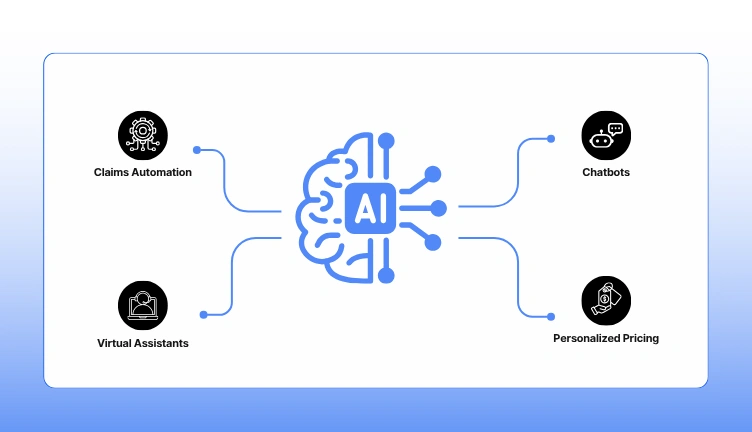
AI in insurance is now making a quantifiable difference where it counts most: the customer experience. It is no longer a pilot project or innovation lab experiment.
From claims to onboarding to support, insurers are using AI engagement tools to shift from reactive service to proactive, personalized insurance service.
Here are the areas where AI is driving real transformation:
1. Faster, More Accurate Claims Handling
Claims are where the customer experience often breaks down. Long wait times, redundant forms, and unclear next steps erode trust fast. AI is helping insurers streamline this entire journey:
- AI-powered claims triage identifies and routes claims based on complexity or urgency.
- Computer vision tools assess damage from images in auto or property claims.
- Natural language processing extracts data from documents to reduce manual entry.
These enhancements enhance CSAT and lessen customer annoyance in addition to being operational.
2. Real-Time Customer Support That Feels Personal
AI engagement tools like chatbots, voice assistants, and intelligent IVRs have come a long way. These days, they adapt rather than just react:
- Chatbots can recognize returning users and personalize responses based on past interactions.
- Real-time AI assistants support human agents during calls, surfacing product info, sentiment cues, or compliance flags.
- Voice analytics detects stress, hesitation, or confusion, triggering escalation or coaching alerts.
This makes it possible for insurers to provide individualized insurance services at every touchpoint using intelligent machines that can learn and react.
3. Hyper-Personalized Offers and Policy Recommendations
To provide highly relevant product recommendations, AI assists insurers in analyzing both structured and unstructured data, from customer behavior to life stage events:
- For example, if a customer recently bought a home, the system can recommend bundled home and life insurance at just the right moment.
- Usage-based auto insurance adjusts premiums based on driving behavior, powered by telematics and AI analysis.
This kind of personalization not only increases conversion, but it also builds long-term loyalty by aligning products with real customer needs.
4. Proactive Risk Mitigation and Engagement
Smart insurers are shifting from “We'll be there when something happens” to “We’ll help you avoid risk altogether.” AI enables that shift:
- IoT + AI can monitor home systems to alert customers to water leaks or fire hazards.
- Health insurers use wearables and AI to encourage healthy behavior and reduce claims.
It's not merely customized. It's a preventative measure.
AI is making a difference because it’s turning every interaction into a data-rich opportunity to serve better. When the proper engagement tools are in place, insurers anticipate rather than just react. That’s how carriers are moving from product sellers to experience enablers.
Drive CX results with every call across claims and support.
This blog is just the start.
Unlock the power of Convin’s AI with a live demo.

Why AI Customer Experience Efforts Often Hit a Wall
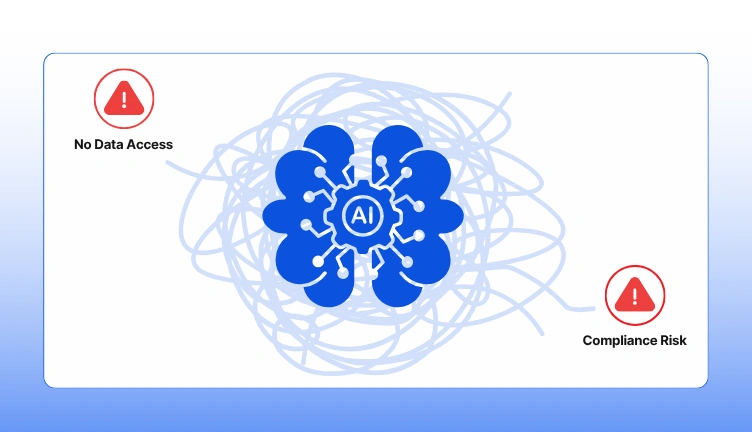
Insurers are investing in AI to modernize the customer experience. Whether it’s chatbots, automation, or real-time analytics, the goal is to create faster, smarter, more connected journeys. But most initiatives don’t scale. They stall after pilots, fail to get adoption, or struggle to prove value.
Here’s where it usually breaks down.
1. Data is fragmented and disconnected: AI needs unified data to function. Most insurers still operate with customer, claims, and conversation data spread across different systems. AI tools can’t personalize service or surface real-time insights without a complete view.
This makes even the best technology feel underwhelming because the fuel it needs is missing.
Tip: Structure data around the customer journey. Feed your AI with full access to customer conversations and interaction history.
2. Automation replaces personalization: AI is often introduced to speed things up. That’s important, but not at the cost of empathy. Customers want efficiency, but they also want to feel understood. Too much focus on automation can lead to cold, transactional service.
This defeats the purpose of using AI for better experiences.
Tip: Use AI engagement tools to support, not replace, the human element. Help agents personalize at scale.
3. Frontline teams are left out: The success of AI depends on the people using it. Many agents don’t trust the recommendations. Others don’t know how to use the insights. If tools are complicated or feel like surveillance, usage drops quickly.
Tip: Give your team simple, real-time guidance inside their workflow. Make it easy to adopt and easier to trust.
4. No clear link to CX goals: Too often, AI is deployed without a clear objective. Without measurable KPIs like CSAT, resolution time, or retention, leaders struggle to justify continued investment. The initiative fades or loses momentum.
Tip: Start with one problem to solve. Track it closely. Prove quick wins and scale from there.
How Convin Helps You Avoid These Traps
Convin is designed to solve these real-world challenges from day one. It connects directly to your customer conversations, be it on calls, chats, or meetings, and it extracts insights that your team can act on immediately.
Here’s how Convin supports personalized insurance service at scale:
- Real-time prompts guide agents based on live sentiment and customer intent
- Every call is analyzed automatically for compliance, coaching, and context
- AI engagement tools work in the background with no extra clicks, no added dashboards
The result is faster, more consistent, and more human service without adding complexity to your workflows.
Break through silos and scale CX wins with built-in insights and automation.
How Convin Helps You Deliver Smarter, More Personalized CX
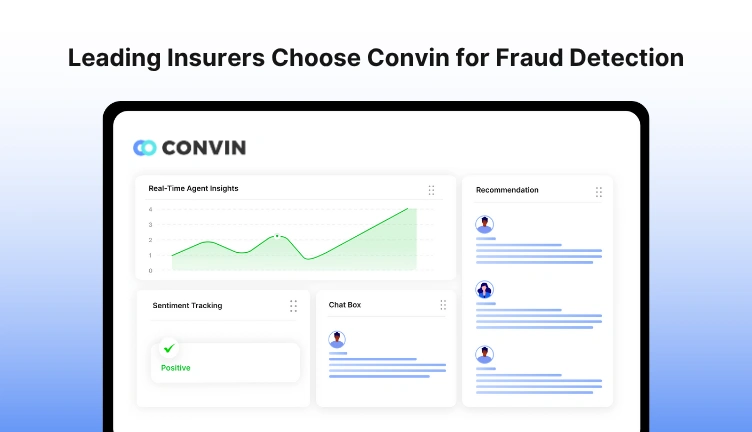
Most insurers know what they want from AI: more relevance, more efficiency, and better customer loyalty. What’s often missing is the execution layer.
Convin fills that gap by turning everyday conversations into real-time, actionable insights that drive personalized insurance service at scale.
Here’s how Convin makes that possible:
1. Real-Time AI Insights That Guide Every Interaction
Convin doesn’t just record calls or chats. It listens, understands, and responds.
With advanced AI engagement tools, the platform delivers live prompts to agents based on customer context. These could include:
- Policy suggestions aligned with customer needs
- Alerts when customer sentiment shifts
- Next-step recommendations to maintain empathy and compliance
This allows your frontline teams to personalize conversations on the fly, without scripts or guesswork.
2. Unlocking Actionable Intelligence from Customer Conversations
Every customer interaction contains valuable insights. Convin captures and analyzes 100 percent of them to identify:
- Common friction points in claims or onboarding
- Questions that signal upsell or retention risk
- Themes and trends that help product and CX teams act fast
This enables your teams to fix issues before they scale and shape strategy with real data.
3. Automated QA and Coaching to Scale Performance
Manual call audits only scratch the surface. Convin automatically scores every interaction for quality, compliance, and coaching opportunities. This includes:
- Flagging process deviations or regulatory risks
- Highlighting areas where agents need support
- Enabling faster feedback loops and continuous improvement
You get better consistency, sharper performance, and higher customer satisfaction without adding to your QA load.
4. Scalable Personalization That Doesn’t Break Ops
Convin is built to help insurers deliver personalized insurance service without adding complexity. AI handles the analysis and insight delivery. Agents stay focused on serving. Leaders get the visibility they need to make CX decisions confidently.
Some real outcomes:
- 27 percent faster claims resolution
- 95 percent QA coverage without growing QA teams
- Consistent agent improvement in under 60 days
These are real improvements that directly impact customer experience and business results.
Coach, personalize, and improve in real time with Convin!
Building a Scalable, Human-Centered AI CX Strategy That Works
Too many AI investments in insurance get stuck in "pilot purgatory." They work in theory, impress in demos, and then quietly fade out when it’s time to go live.
Why? Because the strategy behind the tech is missing.
AI customer experience isn’t just about smarter automation. It’s about combining intelligence with empathy, scale with control, and speed with trust.
Here’s what sets a winning strategy apart.
Start with people, not platforms.
AI should make things easier for your teams, not harder. Before rolling out any tool, map out how it will impact your agents, managers, and customers. If your frontline doesn’t buy in, the tech won’t stick.
Fix the foundation before scaling.
You can’t personalize anything if your data is scattered. Consolidate your customer data sources, remove silos, and make sure your AI tools are working off clean, unified information. Otherwise, you’re optimizing chaos.
Use automation with intention.
Not everything needs a bot. Use AI for what it’s best at:
- Repetitive processes like claims triage or document extraction
- Real-time agent support during calls
- Identifying sentiment or intent before escalation is needed
However, keep people informed when it matters, particularly during high-risk or high-emotion situations.
Make feedback part of your process.
Smart CX strategies don’t stop after go-live. Use AI tools like Convin to capture real conversations, learn what’s working, and spot what’s not. Feed those insights back into operations, training, and product strategy.
The result? A CX engine that improves itself over time.
One insurer used this approach to boost QA coverage to 95 percent without adding new headcount. Another reduced claim cycle time by over 25 percent.
These aren’t just isolated wins. They’re the outcome of a strategy that puts the customer experience first and lets AI support, not control, the journey.
If your goal is to scale AI without losing the human touch, Convin is ready to help you get there.
Curious how your team could personalize insurance conversations without adding complexity?
Get a quick walkthrough of how Convin helps insurers turn conversations into CX wins.
Frequently Asked Questions
1. What is AI customer experience insurance?
AI customer experience insurance refers to the use of AI tools to personalize, automate, and optimize policyholder interactions across claims, support, and onboarding processes.
2. How do AI engagement tools improve insurance retention?
AI engagement tools boost retention by analyzing customer behavior, predicting churn risks, and enabling timely, personalized outreach that keeps policyholders engaged and loyal.
3. Can personalized insurance service work for large-scale insurers?
Yes, with the right AI platform, personalization can scale efficiently across thousands of interactions, ensuring each customer feels seen, even in high-volume environments.
4. Are AI tools in insurance compliant with regulations?
Leading AI engagement tools, like Convin, are built with compliance in mind—automating QA, flagging violations in real time, and keeping audit trails for regulatory checks.
5. How fast can insurers see results from AI in CX?
Insurers using AI in customer experience often see measurable improvements in claims cycle time, CSAT, and agent efficiency within the first 30 to 60 days of rollout.


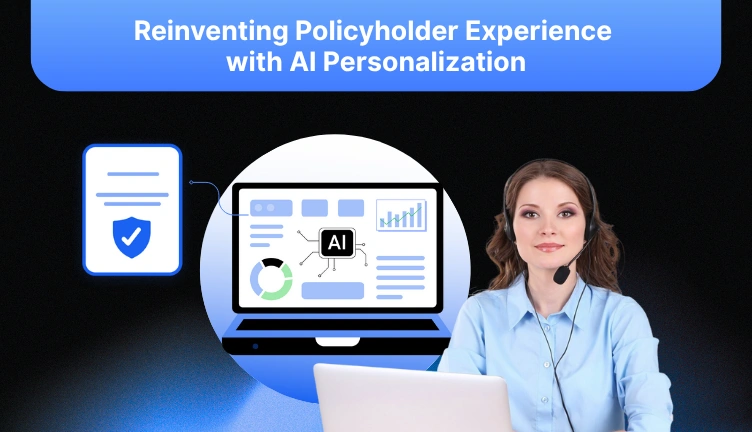





.avif)